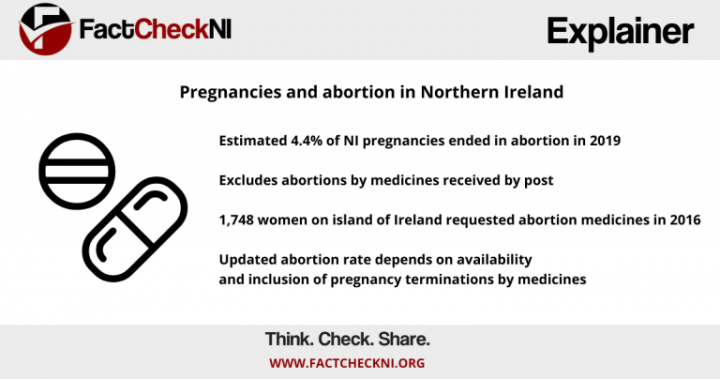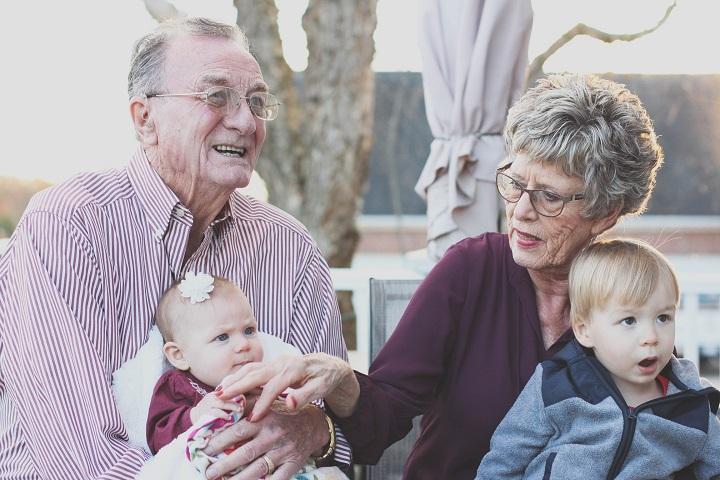
Birth rates across the island of Ireland have been declining steadily over the decades, and began decreasing more rapidly from the late 1980s onwards.
Through statistics and research found through The Data Times search engine and collaborative project, Sync NI was able to focus on research relating to Ulster over this time period, to find the bigger picture for the reason behind this decline.
In 2006, there were 23,272 resident births recorded in Northern Ireland. This number dropped to a provisional figure of 20,815 in 2020.
There was a brief, slight incline in birth rates from 2007 – 2010 (which is interesting given the financial recession that followed 2008’s economic crash), but for the last decade the numbers have steadily dropped year on year.
From 2006 to 2020, January has steadily and consistently had high birth rates, with September and October remaining more or less continually high. This suggests that conception rates were thus higher round the Easter or Christmas periods.
Despite a decline in yearly resident birth rates, 2020’s summer months (June, July, August) saw a high number of births in comparison with previous years.
Average age of mothers has increased
In 1979, the average age of all mothers in NI was 27.5. Without interruption, this average age has steadily increased year on year and as of 2019 the average age of all mothers is 30.9.
Similarly, the average age of first-time mothers here has increased consistently from 24.3 in 1979 to 28.9 in 2019.
Women appear to be having children later in life and consequently this means less children.
Interestingly, in Northern Ireland, artificial birth control was unavailable and largely condemned until the 1960s. There was significant opposition from the Catholic Church and politicians there to the establishment of family planning services.
In 1972 Article 12 of the Health and Personal Social Services (Northern Ireland) Order required the Ministry of Health (now Department of Health and Social Services) to arrange the provision of family planning services in Northern Ireland.
Up until 1979, Irish law prohibited the importation and sale of contraceptives, thus many women from the Republic of Ireland often came over the border to get contraceptives and were sometimes stopped by customs when getting the train back.
The average age of mothers in the Republic of Ireland in 2016 was 32.7 years old, which is the highest age of mothers at maternity since the number was first recorded in 1955.
It could be possible that women in the Republic are waiting longer to have children due to the comparatively higher cost of living down south. Groceries and utilities south of the border are estimated to cost 20% higher than items in the north.

Cost of living table for both NI/ROI (c) Slugger O'Toole
This could be due to a lack of finance for access to healthcare, or distance from major hospitals and facilities.
Rental costs in the Republic are currently increasing by around 10% each year, and healthcare is also a large difference between Ulster and the island’s other provinces, with Northern Ireland having free access and the south averaging monthly healthcare costs of €155 according to a report on Slugger O'Toole.
However in both the north and the south, the poorest areas are to be found in the immediate vicinity of the border, and this may correlate with the fact that in 2017, Cavan and Monaghan were found to have the second highest infant mortality rate after Dublin (in all of ROI, NI excluded). 31 children under the age of one died in the border region in 2015.
Northern Ireland's overall infant mortality rate remains the highest of any UK region but has decreased, according to the BBC.
Births by Marital Status in NI
In 1979, 26,510 of all Northern Ireland births that year were within marriage, which in itself is a far larger amount of births in general within NI last year.
Only 1,668 births were outside of marriage.
The playing fields have steadily levelled out over the decades and in 2019 12,378 of all NI births were within marriage, with 10,069 outside of marriage, showing a drop (potentially just in the numbers of marriages taking place) in married couples having children or multiple children and a serious increase in couples or single parents having children out of wedlock.

(c) NISRA - Northern Ireland Statistics & Research Agency
There is also of course, the fact that many modern women and/or their partners are choosing not to have families. Although there are still societal pressures for couples to continue down the traditional 'nuclear family' route, many women are instead focusing on their careers whereas in the past, they may have been seen as more customary homemakers.
Sarah Byrne, Product Manager at software firm Flax & Teal is one such female, and told Sync NI: "It has taken me a long time to work through my education and career options and to settle on a clear path.
"I am only starting to put away money at the age of 29 and want a few years to enjoy my earnings. I felt like I was being pulled in all directions - being told that my biological clock was ticking, that I had to hurry up and buy a house, get married but also progress my career. It was the culmination of all this pressure that forced me to think long and hard about whether children would fit into my life."
Donegal, Monaghan & Cavan
It’s been harder to gather info on these three counties as their stats go through the CSO and even then, not as much detail is given to them as they are just classified as “part of Ulster”.
However, in 2016, the number of births are consistent with the rest of Ulster’s steady birth rate declines and were as follows (according to CSO):
Cavan – 1,048
Donegal – 1,917
Monaghan – 800
In 2012, they were:
Cavan – 1,158
Donegal – 2,068
Monaghan – 841
Abortion figures

Abortion was no longer deemed a criminal offence in Northern Ireland as of November 2019, and in the Republic of Ireland it was leaglised a year prior to this
In 2019, available figures estimate that 4.4% of pregnancies of Northern Ireland residents ended in abortion, according to FactCheck NI.
During this year, a total of 6,666 abortions were carried out in Ireland overall (67 of these being in Northern Ireland).
With the legalisation of abortion still in its early stages here, it is assumed that the more it becomes 'normalised' in society, that this will contribute to lower birth rates.
As per Sarah Slevin's look at declining birth rates in Connacht, between 2008-2018, abortions were not carried out in any part of Ireland. This suggests that the decrease in birth rates up until now cannot be linked to abortions as the rate of those travelling to the UK has gone down in line with birth rates in the same 10-year period.
Increase in population despite decline in birth rates
While the number of actual births are decreasing, the population of Northern Ireland is generally increasing but is instead becoming progressively elderly, with pensioners now set to outnumber children before the end of the decade.
Discussing statistics that detailed this elderly incline last year, a NISRA spokesperson said: “The number of people aged 65 and over is projected to overtake children by mid-2028.
“In terms of population change, the estimated population of Northern Ireland rose by 12,000 people from mid-2018 to reach 1.89 million in the year. This increase can mainly be attributed to the difference between births and deaths.
“Projections indicate that the population of Northern Ireland will continue to grow until 2048 with a potential fall in overall population projected beyond that.”
Northern Ireland has also recently seen the fastest population growth of the four nations in the UK.
It rose by 0.64% from mid 2018 to mid 2019, according to the Office for National Statistics (ONS). England saw estimated growth of 0.55%, followed by Scotland (0.46%) and Wales (0.45%).
Over the last two decades, Mid-Ulster experienced the greatest population rise here, at 24.7%.
This article is part of a wider, All-Ireland data-journalism series that examines birth rates in each province. The project is in collaboration with the Data Times and the Digital Times.